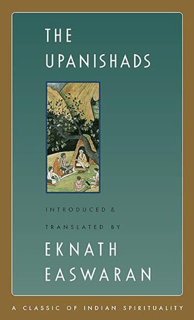Exploring Ageless Wisdom: A Look at the Upanishads
ARTICLE
ChatGPT-3.5
3/20/20243 min read


The Upanishads, sometimes referred to as Vedanta or the end of the Vedas, represent the philosophical culmination of ancient Indian thought. Rooted in the Vedic tradition, these sacred texts offer profound insights into the nature of reality, the self, and the ultimate truth. With origins dating back over 2,500 years, the Upanishads continue to inspire seekers and scholars alike with their timeless wisdom. In this article, we embark on a journey through the history of the Upanishads and explore the most important teachings they impart.
A Glimpse into History
The Upanishads emerged in the later periods of Vedic civilization, during a time of intense philosophical inquiry and spiritual exploration in ancient India. Traditionally, there are said to be more than 200 Upanishads, but the principal Upanishads, numbering about 10 to 13, are considered the most authoritative and widely studied. These include the Brihadaranyaka, Chandogya, Taittiriya, Aitareya, Kena, Katha, Isa, Mundaka, Mandukya, and Prashna Upanishads.
The Upanishads are written in the form of dialogues between spiritual teachers (gurus) and their disciples (shishyas), often set in tranquil forest hermitages (ashrams) or sacred spaces conducive to contemplation. These dialogues delve into profound metaphysical inquiries and explore the nature of existence, consciousness, and the ultimate reality (Brahman).
Key Teachings and Insights
Brahman and Atman. Central to the teachings of the Upanishads is the concept of Brahman, the ultimate reality that underlies and permeates the entire universe. Brahman is described as formless, infinite, and eternal, beyond the realm of words and concepts. The Upanishads proclaim, “Brahman is bliss, Brahman is truth, Brahman is infinite.”
Brahman is not merely an abstract principle, but is also immanent within all beings as the innermost essence, known as Atman. Atman is the true self, beyond the limitations of the ego and individual identity. The Upanishads declare, “That thou art” (Tat Tvam Asi), emphasizing the identity of Atman with Brahman.
Maya and Illusion. The Upanishads elucidate the concept of Maya, the cosmic illusion that veils the true nature of reality. Maya is described as the power of Brahman, which creates the appearance of diversity and multiplicity in the world. However, underlying this apparent diversity is the unchanging reality of Brahman. Understanding Maya is crucial for transcending the limitations of the phenomenal world and realizing the ultimate truth.
Karma and Reincarnation. Karma, the law of cause and effect, plays a significant role in the Upanishadic teachings. Actions performed with selflessness and purity of heart lead to positive karma and spiritual evolution, while selfish actions generate negative karma and bind the soul to the cycle of birth and death (samsara). The Upanishads affirm the doctrine of reincarnation (samsara) and emphasize the importance of spiritual liberation (moksha) from the cycle of rebirth through self-realization.
Paths to Liberation. The Upanishads delineate various paths (margas) to spiritual liberation, catering to the diverse temperaments and inclinations of seekers. These paths include:
Jnana Yoga. The path of knowledge, which involves philosophical inquiry, self-reflection, and the cultivation of wisdom to realize the unity of Atman and Brahman.
Bhakti Yoga. The path of devotion, which entails heartfelt devotion and surrender to the divine, leading to union with Brahman through love and devotion.
Karma Yoga. The path of selfless action, which involves performing one’s duties without attachment to the fruits of actions, thereby purifying the mind and attaining spiritual liberation.
Profound Wisdom
The Upanishads stand as timeless monuments of spiritual wisdom, guiding seekers on a profound journey of self-discovery and realization of the ultimate truth. Through their profound teachings on Brahman, Atman, Maya, karma, and the paths to liberation, the Upanishads offer invaluable insights into the nature of existence and the purpose of human life. As knowledge seekers delve deeper into the teachings of the Upanishads, they often embark on a transformative journey that leads from ignorance to enlightenment, from bondage to liberation, and from the finite to the infinite.
—This article was partially generated by ChatGPT (powered by OpenAI’s language model, GPT-3.5; https://openai.com). The editing was performed by Aaron Larson.
Purchase the book now on Amazon
As an Amazon Associate, I earn from qualifying purchases. This does not affect your cost. The commission comes out of Amazon's profits. Thank you for your support.


